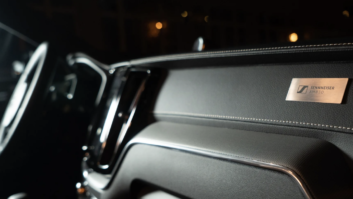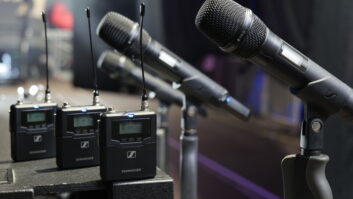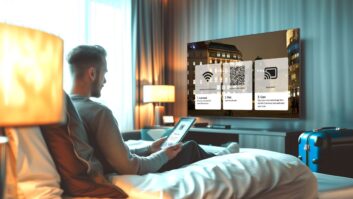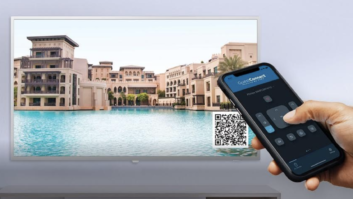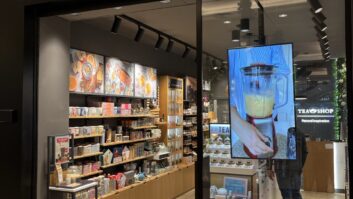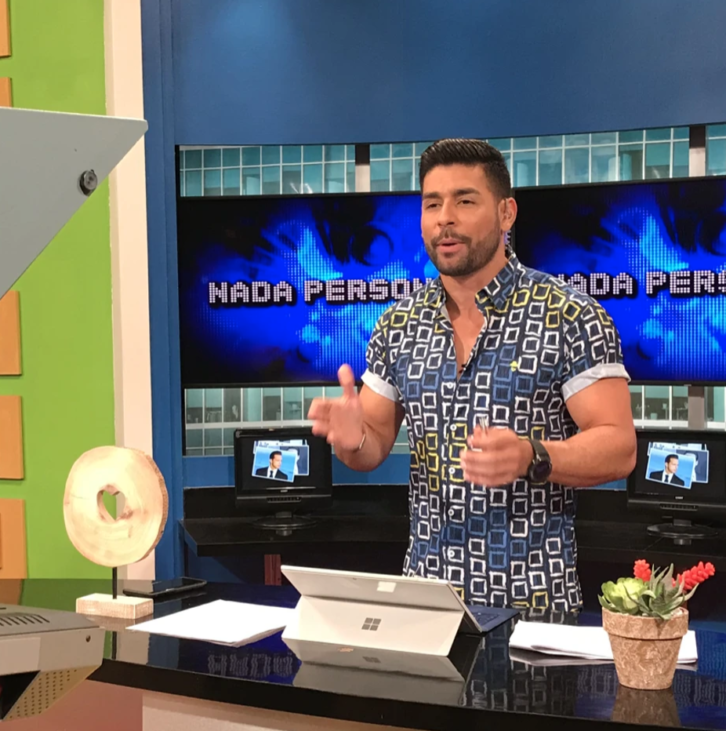
WKAQ, owned and operated by the Telemundo Group and the largest and longest-running television station in Puerto Rico, has implemented a Dante-enabled Sennheiser Digital 6000 wireless microphone system and facility-wide networked antenna installation.
Installed, and commissioned by San Juan-based equipment provider AVL Group and custom-designed by Sennheiser, the new system provides wireless microphone coverage throughout the building’s eight television studios and outdoor production areas.
“WKAQ wanted talent to be able to walk from Studio 1 all the way through the hallways and rear corridors to Studio 8 and have perfect, broadcast-quality coverage all the way,” said Sennheiser’s Andrew Kornstein, customer development and application engineering, Americas. “It was a very complex requirement. This is not just something that we have in the catalogue.”
Alexander Rojas, AVL Group’s vice president explained that WKAQ-TV wanted to be able to access any production audio source in the building from any control room. Those sources can include the on-air talent, who sometimes move between studios.
Meanwhile, with the new networked Sennheiser setup, each control room is no longer limited to the number of wireless microphone channels installed in the studio but can scale the system up if a production demands it. “It’s just a matter of audio routing,” said Rojas.
You may also be interested in:
- ‘It was great to be back’: Inside the world’s first post-lockdown arena concert
- ‘Hardest hit markets will see strongest growth in 2021’: AVIXA exec responds to biz report
- Global AV biz to shrink by $20 billion in 2020 says market report
- Sennheiser to cut 650 jobs by 2022
Following Kornstein’s initial site visits and consultation with AVL Group, Michel Morrisette, customer development and application engineering at Sennheiser’s Montreal office, designed a system to meet WKAQ’s requirements. The networked antenna system comprises 20 Sennheiser A 2003-UHF passive directional antennas and six A 1031-U passive omni-directional antennas. An equipment rack centrally located in the main hallway interconnects the distributed antenna system and the wireless microphone receiver racks through a series of ASA 214 antenna splitters, ACA 3 antenna combiners and AB 3700 broadband antenna boosters. The racks also house custom connector panels designed and built by Morrisette.
There are three wireless microphone receiver racks — one in Studio 2 that also serves Studio 1, another in Studio 3 that also serves Studios 4 and 5, and a third in Studio 8. Studios 6 and 7, which share a control room, are currently unused. AVL Group pulled more than 8,000 feet of cable for the project, reports Freddie A. Rojas, who led the firm’s post-sales engineering and commissioning team.
AVL Group also delivered 22 Sennheiser EM 6000 Dante two-channel digital receivers plus 14 SKM 6000 handheld transmitters topped by MMD 945 dynamic super-cardioid capsules to WKAQ. Thirty-two MKE 1 miniature clip-on lavalier microphones are paired with 29 SK 6000 pocket transmitters, with three SK 6212 mini-bodypack transmitters additionally available for female on-air talent. All of the equipment uses rechargeable batteries and Sennheiser’s L 6000 rack-mount chargers, said Alexander Rojas.
Studios 1 through 5 are used to produce WKAQ’s original programming, which includes a weekly comedy sketch show, game shows, an entertainment news show and political news analysis. Studio 8 is used daily for multiple daytime and nightly newscasts as well as a variety and interview show.
A number of the shows also make use of some of the public areas of WKAQ’s building in their productions. “There is a large hallway that they wanted to sometimes use on the game shows,” commented Alexander Rojas. “Also, the cameras can go into the front yard, which is quite nice, and they also do things in the parking lots.” As part of this project, AVL Group also prewired the rear parking lot, he says.
WKAQ had previously standardised on Sennheiser’s 2000 series analogue wireless system. “They’ve been a Sennheiser house for 10 or 12 years,” said Alexander Rojas. Maximising WKAQ’s prior investment, some of the existing 2000 series antennas were incorporated into the new antenna system. The station also retained an EM 2050 twin analogue receiver for use with one show host’s custom-fitted microphone.
The Sennheiser digital wireless project was implemented in three phases, beginning with the wiring, which was done during the week of Thanksgiving 2019. The second phase, installation and commissioning in the individual studios, was completed by year’s end. “After that,” said Freddie A. Rojas, “it was just a matter of coordinating with the customer in order to train the technicians so they could go on-air without stopping any of their productions.”

